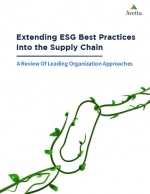Male Mental Health: Why it Matters in the Workplace
This white paper will explore why male mental health is a critical issue in traditionally male-dominated industrial environments around the world and the steps organizations can take to address these issues.
Strategies for addressing an oft en-overlooked health and safety issue in labour-intensive industries
The stigma of mental illness can be deadly in sectors that are traditionally dominated by men. Historically, heavy manufacturing and construction sites around the world have never been perceived as environments where workers felt comfortable discussing their problems.
This lack of openness and support can lead to catastrophic results. For instance, in the United States (U.S.) the construction sector has a suicide rate of 53 per 100,000, which is four times higher than the general population, according to the U.S. Centers for Disease Control.
In Australia, suicide is the leading cause of death for men aged 15 to 44.2 Another study, conducted by the European Commission found that men completed more than 75 percent of suicides in the EU.3 Unfortunately, as indicated in these statistics, this issue isn’t isolated to a specific region, with almost two-thirds of worldwide suicides completed by men.
Stress is a common issue in many workplaces globally. In the United Kingdom (UK), one in 10 male workers say they’re “significantly stressed.”5 Key workplace factors that have been identified as detrimental to an individual’s mental health include poor ergonomics, exposure to hazards, increasing work demands and employment insecurity.
It’s undeniable that workers in industrial environments are just as prone to mental health hazards as are workers employed in occupations traditionally perceived as high stress, such as the financial sector (see graphic, “Highest Male Suicide Rates by Industry in the U.S.”).
This white paper will explore why male mental health is a critical issue in traditionally male-dominated industrial environments around the world and the steps organizations can take to address these issues.
What’s Related




Favorites





